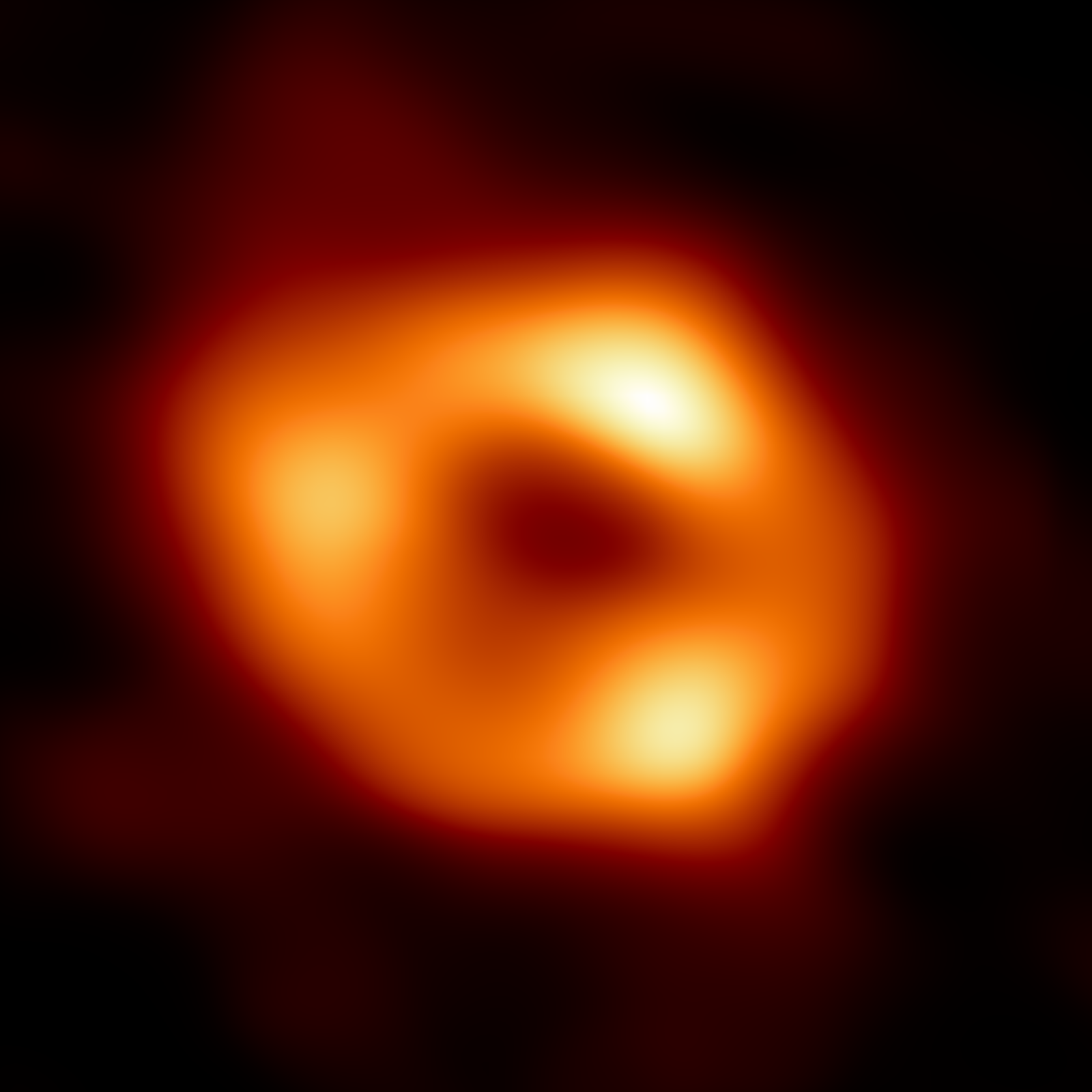Dark Matter
A noted astronomer Vera Rubin, was able to detect with accuracy an unusual phenomenon. Galaxies rotate around their central mass quite differently than our planets orbit around our Sun in our solar system.
In our solar system planets are free to orbit independently of each other, (minus planetary gravitational tugs) and follow the physical laws of nature as outlined by Kepler and Newton. The further out planets orbit the Sun the slower they travel. As an example using Pluto. Pluto's orbital speed is a mere fast walk compared to the blistering speed of Mercury's orbit.
In Rubin's detailed analysis, galaxies seem to break the laws of known physics. The further out you travel in a galaxy, orbital speed slightly increases. Also conversely the closer to the centre of the galaxy the slower galaxy is orbiting.

These results are not what would have been expected.
Astronomers were quick to explain this seemingly contradiction in scientific law. The resulting conclusion was there had to been an unknown and therefore an unseen mass accounting for this irregularity in predicted results. Hence Dark Matter was postulated and has been accepted into the scientific community.
Why the discrepancy in our solar system v.s. a galaxy?
There is three basic errors made in comparing the two systems.
1) The planets in our solar system orbit independently of each other while the star systems in a galaxy do not. In fact they are tied to each other.
2) The closest star systems in a galaxy are nearly fixed to the central mass while those further out from the centre of the star systems are being dragged or pulled along. This causes the whole system as a whole to rotate in one direction This is not in any way similar to the independent orbiting of our planets around the Sun which follow the laws of angular conservation.
3) The central mass of a galaxy is not as described by Einstein theorists. A mass so great that light cannot escape causing a singularity. Black holes are not a mass but are a phenomena. The same phenomena as the Sun's corona. This is the slowing of time and the contraction of space. The centre of a galaxy has two or more immense binary pulsars orbiting in a very tight inner orbit. These fast orbiting pulsars are what causes the alteration in time and space. As time slows and approaches zero, light ceases to exist, therefore Black holes appear with the absence of light.
Binary orbiting pulsars are different than any known object. They have the ability to contract space in a very pronounced manner, and which is described as the velocity of gravity. The higher the velocity the strong the time space alteration. This contraction of space, scientifically reported and published "03, Scientific American. is what causes the orbital behavior of a galaxy. Magnetic fields can distort space. The article reported hydrogen atom becomes a spindle 200 times narrower than it's normal shape.
In the whirlpool galaxy above, note that the stars are seemingly attached like spokes on a wheel around the spinning central mass. This is not similar in anyway to our orbiting planets.
As these stars are being dragged along in unison those further out from the centre will possess higher orbital velocities. Just like a whip is being rotated over your head. The tip of the whip will travel at higher speeds.
The number of binary pulsars at the centre of a galaxy can actually be determined, by simply counting the spokes on the wheel of the spinning galaxy. Each orbiting pulsars is accounting for a similar number of star systems in it's grasp.
A galaxy that seems to have a continuous rotation of star systems indicates the degree how tight the Pulsars are orbiting and at what velocity.
Why does the rotational orbits of galaxies not follow the conservation of angular motion? Simply because the Pulsars in the centre of the Black Holes are too strong. Unlike our Sun, Pulsars do not release mass (star clusters) into an elliptical orbit, but continue to drag them ever closer to their centre.
Why does the orbital velocity approach zero as star mass nears the centre of the galaxy? The closer to the centre of the galaxy time begins to slow. As light travels in the medium of time, at the very centre of the galaxy, or at the emergence of the black hole, time approaches zero or nearly stops and lights relative velocity acts the same. The object at the centre is now black.
By using a computer simulation of orbital velocity and distances between star clusters as they approach the centre of a galaxy, are both approaching zero. Believe what you observe.
There can only be one conclusion. The centre of the galaxy is contracting space and slowing time.
Galaxy rotational rates do NOT contravene any scientific law.
Therefore Dark Matter does NOT exist.
Pulsars are naturally attracted to each other. Their huge spinning magnetic field contracts space and slows time, which inevitably draws two Pulsars together into an ever stronger and decaying orbit. Any star cluster in the region will also be drawn into this ever more powerful dance.
This is the beginning formation of a black hole and how a galaxy is initially formed.
For further reading: Blog. Pulsars: the Universe's most Powerful Object

:max_bytes(150000):strip_icc():format(webp)/STSCI-H-p1720a-m-1797x2000-59e7e6d4685fbe00116bb47f.png)
